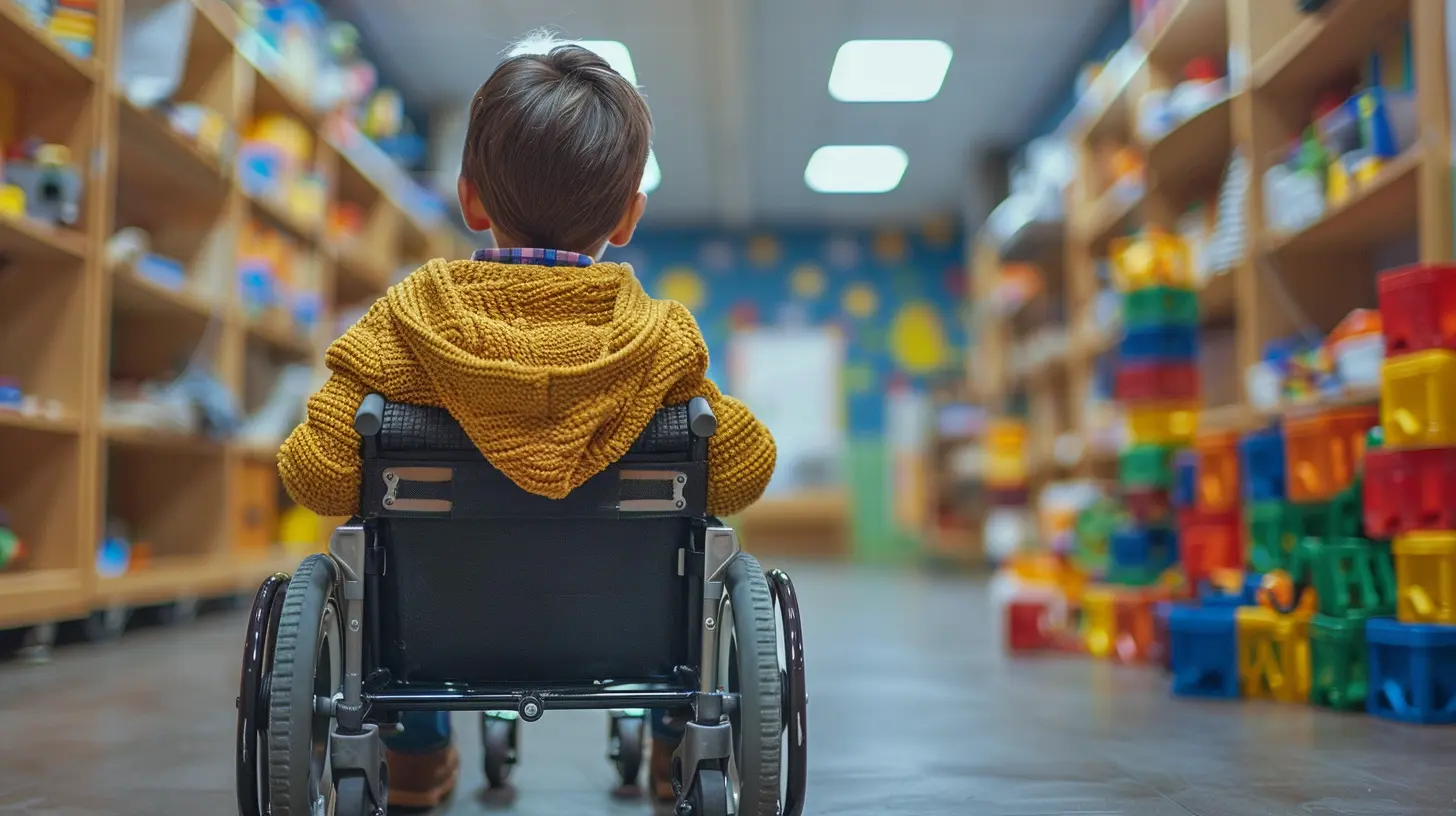Understanding Autism Spectrum Disorder and Its Impact on Learning
1 June 2025
Autism Spectrum Disorder (ASD) is a fascinating and complex condition that affects how individuals communicate, behave, and interact with the world around them. It’s like a kaleidoscope, where no two individuals with autism are the same yet share certain characteristics. As we dive into the world of autism, one area that demands attention is its impact on learning.
But what exactly is Autism Spectrum Disorder, and how does it influence a child’s learning journey? Let’s take a closer look.

What is Autism Spectrum Disorder (ASD)?
Autism Spectrum Disorder, often simply referred to as autism, is a developmental disorder that typically appears in early childhood. It affects how a person perceives and socializes with others. It’s called a “spectrum” because the condition varies widely in its presentation and severity. Some people with autism may require significant support in daily life, while others can function independently and excel in specific areas.Key Features of Autism Spectrum Disorder
ASD is characterized by a broad range of symptoms, but most individuals with autism share some common features:- Communication Challenges: This could manifest as delayed speech development, difficulty holding conversations, or even non-verbal communication.
- Social Interaction Difficulties: Individuals with autism often struggle with understanding social cues, such as body language or facial expressions.
- Repetitive Behaviors: These can include repetitive movements like hand-flapping or an insistence on sticking to specific routines.
- Unusual Interests: Many individuals with autism can develop deep, focused interests in particular subjects or activities. For instance, they might become experts in trains, dinosaurs, or even specific types of technology.
The Importance of Early Diagnosis
Early diagnosis is vital because it opens the door to interventions that can significantly improve a child's development. The signs of autism can appear in children as early as 18 months, and early intervention can help them develop critical skills that will benefit them throughout their lives.
How Autism Spectrum Disorder Affects Learning
Learning is a highly individual process. We all learn in different ways—some of us are visual learners, while others process information better through listening or doing. But for children with ASD, the learning experience can be particularly unique and challenging. The key to understanding their learning process is recognizing that it’s not about their inability to learn, but rather the need for tailored approaches that align with their cognitive and sensory needs.Sensory Sensitivities and Its Impact on Learning
Imagine being in a classroom where every sound, every flicker of light, and even the texture of your clothes feels overwhelming. This is often the reality for children with ASD, who frequently experience sensory sensitivities. Some may be hypersensitive to stimuli, while others may be hyposensitive.- Hypersensitivity: A child might find certain noises unbearable, like the hum of a fluorescent light or the ticking of a clock. This can make it hard to focus on lessons.
- Hyposensitivity: On the other hand, some children might have a reduced sensitivity to sensory input. They may seek out sensations by touching objects constantly or making repetitive sounds.
These sensory challenges can make a traditional classroom environment overwhelming, which in turn affects their ability to concentrate and absorb information. Educators and parents need to be aware of these needs to create a conducive learning environment.
Social Communication and Interaction in the Classroom
Social communication is at the heart of learning in a typical classroom setting. Think about how much of the learning process is tied to group work, peer interactions, and teacher-student conversations. For children with ASD, the difficulty in understanding social cues can make these interactions stressful and confusing.- Group Activities: Social challenges may make it difficult for a child with autism to participate in group activities. They might not understand the unspoken rules of taking turns or sharing ideas.
- Teacher Instructions: Many students with ASD need clear, direct instructions. The subtle hints or indirect suggestions that teachers often use may go unnoticed, leading to misunderstandings.
Given these challenges, teachers may need to adapt their communication style—using clear, straightforward language and avoiding abstract concepts or figurative language that might be confusing.
Repetitive Behaviors and Restricted Interests: A Double-Edged Sword
Repetitive behaviors and restricted interests are common in children with ASD, and while they can sometimes be disruptive, they can also be a source of strength.- Repetitive Behaviors: These can become a barrier to learning when they interfere with classroom activities. For example, a child who insists on organizing their desk in a specific way may become distressed if this routine is disrupted.
- Restricted Interests: On the flip side, a strong focus on a particular subject can be leveraged to enhance learning. If a child with autism has a deep interest in space, for example, teachers can use this interest to engage them in subjects like science and math.
The key here is balance. Educators must acknowledge and respect these behaviors while gently guiding the child towards flexibility and broader learning experiences.

Strategies for Supporting Learners with Autism
Every child with autism is unique, and there is no one-size-fits-all solution. However, there are some strategies that can help create a more inclusive and supportive learning environment for these students.1. Individualized Education Plans (IEPs)
An Individualized Education Plan (IEP) is a customized learning plan designed to meet the specific needs of a student with ASD. The IEP outlines the child’s strengths, challenges, and the strategies that will be used to support their learning. This plan often includes modifications to the curriculum, extra support from teaching assistants, and even specialized technology to aid learning.2. Visual Supports and Schedules
Many children with autism are visual learners, meaning they process information better through images than through words. Visual supports, such as picture schedules, can be a game-changer in helping these students understand and follow daily routines.- Visual Timetables: A visual timetable shows students the sequence of activities for the day, helping them prepare for transitions.
- Social Stories: These are short, simple stories that explain social situations and expected behaviors, making social interactions less confusing.
3. Sensory-Friendly Environments
Creating a sensory-friendly learning environment is crucial. This might mean providing noise-canceling headphones for students who are sensitive to sound or setting up a calm, quiet area where they can retreat if they feel overwhelmed.4. Clear, Direct Communication
As mentioned earlier, children with ASD often struggle with understanding indirect communication. Teachers should aim to give clear, concise instructions and avoid using idioms or metaphors that might be confusing.For example, instead of saying, “Let’s hit the books,” a teacher might say, “It’s time to start reading your textbooks.” This ensures that the child understands exactly what’s being asked of them.
5. Positive Reinforcement
Positive reinforcement is a powerful tool in supporting children with ASD. By rewarding positive behavior—whether through praise, a favorite activity, or a tangible reward—teachers can encourage students to engage more fully in the learning process.6. Collaboration Between Home and School
Finally, it’s essential that parents, teachers, and other professionals work together. Regular communication between home and school ensures that everyone is on the same page and that the child is receiving consistent support across all environments.
The Power of Acceptance and Understanding
At the end of the day, the most important thing we can offer children with autism is acceptance. Rather than seeing their differences as deficits, we need to recognize the incredible talents and perspectives they bring to the table.Autism doesn’t have to be a barrier to learning. With the right strategies, support, and understanding, children with ASD can thrive in school and beyond. They may learn differently, but that doesn’t make their learning any less valuable.
In many ways, understanding autism is like learning a new language. It takes patience, effort, and a willingness to see the world from a different perspective. But once we do, the rewards are immeasurable.
Final Thoughts
Autism Spectrum Disorder is not a one-size-fits-all label, and neither is the way it affects learning. Each child with autism is a unique individual with their own set of strengths and challenges. By acknowledging these differences and adapting our teaching methods, we can create an inclusive environment where all students, regardless of their neurological makeup, have the opportunity to succeed.all images in this post were generated using AI tools
Category:
Special EducationAuthor:

Anita Harmon
Discussion
rate this article
3 comments
Ashley Clayton
Understanding Autism Spectrum Disorder is like trying to decode a Wi-Fi password—sometimes it feels impossible, but with patience and a little help, we can connect! Just remember, every learner is unique, and that’s what makes the classroom an adventure. Let’s embrace the quirks!
June 15, 2025 at 3:00 AM

Anita Harmon
Thank you for your insightful comment! Embracing each learner's uniqueness indeed enriches the educational experience and fosters a supportive environment for all.
Wade Wolfe
This article brilliantly highlights the complexities of Autism Spectrum Disorder and its unique impact on learning. By fostering understanding and awareness, educators can create inclusive environments that cater to diverse learning needs, ultimately empowering students with autism to thrive academically and socially. A crucial read for educators and parents alike.
June 9, 2025 at 4:13 AM

Anita Harmon
Thank you for your thoughtful comment! I'm glad you found the article helpful in promoting understanding and inclusivity for students with autism. Your support for this important conversation is much appreciated!
Raina Bishop
Thank you for shedding light on Autism Spectrum Disorder. Your insights are invaluable in fostering understanding and creating supportive learning environments for all students.
June 5, 2025 at 12:58 PM

Anita Harmon
Thank you for your kind words! I'm glad the article was helpful in promoting understanding and support for students with Autism Spectrum Disorder.



